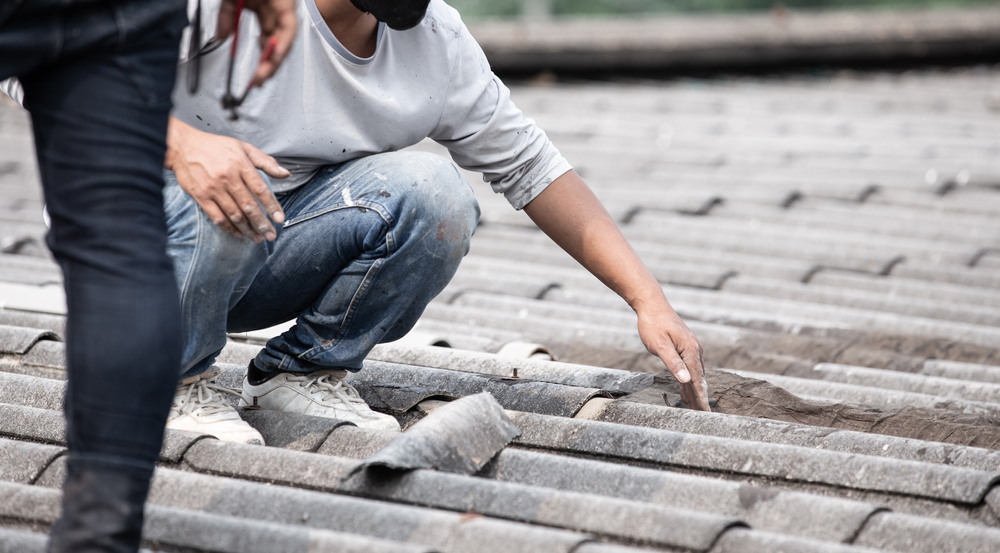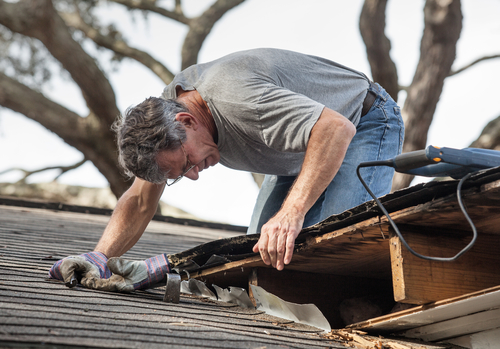- By Smile Roofing
- Roofing Tips
- 0 Comment
Table of Contents
When we talk about making a house feel like a home, one of the most important parts is the roof. It’s not just something that keeps the rain out. It protects your family, helps control the temperature, and adds to how your home looks from the street. So, when people start asking questions about roofing works for your home, they’re really asking how to keep their biggest investment safe, solid, and looking good.
Let’s walk you through the key things you need to know about roofing works for your home, using simple language, easy ideas, and real-life examples. Whether you’re fixing a small leak or thinking about a full roof replacement, this guide will help you feel more confident about what’s going on over your head.
First off—how do you even know what kind of roof you have, or what work it needs?
That’s where good roofing knowledge begins.

Most homes use one of these roofing styles:
Tiled Roofs – Often made of terracotta or concrete. They’re long-lasting but can crack or shift in storms.
Metal Roofs – Usually Colorbond steel. Light, tough, and perfect for hot climates.
Shingle Roofs – More common overseas but sometimes used here for design flair.
Each type has its own benefits and quirks. Roofing works for your home will depend heavily on the kind of material sitting on top of your house. If you’re unsure, a quick chat with local roofing experts can help you find out exactly what you’re dealing with.
Now, once you know your roof type, it’s time to look at the kind of work it might need.
Common Roofing Jobs You Might Need
You don’t always need a brand-new roof. Sometimes, small repairs or regular care can stretch out its life by years. Let’s look at what’s usually involved in roofing works for your home:
1. Roof Repairs
Fixing broken or missing tiles
Patching up rusted sections of metal roofs
Sealing leaks and waterproofing
2. Re-Roofing
Replacing your old roof with a new one, often using a different material
3. Roof Restoration
Cleaning, repainting, and sealing to freshen up an older roof
4. Gutter and Fascia Fixes
Clearing blockages, replacing saggy sections, and repainting trims
5. Roof Inspections
A regular check-up to spot early signs of damage, wear, or pests
Roofing works for your home can also include storm repairs, insulation updates, or even ventilation tweaks to keep things cool during the summer.

Signs Your Roof Needs Work
Here’s a quick checklist to help you spot trouble early:
Water stains on ceilings or walls
A sudden jump in your energy bill
Loose roof tiles or flapping metal sheets
Mould or moss growing on top
Rust, holes, or soft spots
A roof that’s more than 20 years old
If you see any of these, it’s best not to wait. The longer you leave it, the worse the damage can get—and the more it’ll cost to fix.
What Happens During Roofing Works?
We get asked this all the time: What’s the process like?
Roofing works for your home don’t have to be stressful when you’ve got a good team on your side. Here’s a basic step-by-step:
Roof Inspection – The roofer checks everything and writes a report.
Quote and Plan – You get a price and a clear outline of the work.
Prep Work – Materials are delivered, and the area is made safe.
Repair or Replacement – Old materials come off, and the new work begins.
Clean-Up and Final Check – Rubbish is removed, and everything is double-checked.
One important tip: always go with fully licensed roofers. It keeps you covered by insurance and ensures quality work. You can even see verified roofing locations near you with just a tap.
Questions People Often Ask Us
How long does it take?
Usually 1–5 days, depending on how big your roof is and the weather.
Can I stay in the house during the work?
Yes, in most cases. But it might get noisy, so be ready for that.
What’s the cost like?
This depends on the size, pitch, material, and how much damage there is. But a roofer will always give you a clear quote first.
Is metal roofing better than tiles?
Each has its place. Metal is great for fire zones and heat reflection. Tiles are strong and stylish but can be heavier and need more maintenance.

Maintenance Tips to Save Money
Taking care of your roof now can save you thousands down the line. Here are some simple things you can do:
Clean gutters regularly
Trim back tree branches
Look up after heavy rain or wind
Book a yearly inspection
Roofing works for your home become easier and cheaper when you’re proactive. It’s like going to the dentist—small check-ups stop bigger problems later.
Fun Roof Facts That Might Surprise You
Here’s something to think about:
A dark roof can make your home hotter by up to 10 degrees.
Most roofs can last between 20–50 years, depending on material.
Birds and pests love roof cavities—regular checks help keep them out.
Also, when it’s time to update your roof, there’s a whole world of style and colour options that can boost your home’s street value. A nice new roof can add instant visual appeal and may even increase your property’s resale price.
If you’re thinking about your options, we recommend having a look at the full list of roofing services here—you might find exactly what you need to get started.
Quick Roof Material Comparison Table
| Material | Lifespan | Strength | Maintenance | Looks |
|---|---|---|---|---|
| Metal (Colorbond) | 40–50 years | Very strong | Low | Modern |
| Concrete Tile | 30–50 years | Strong | Medium | Classic |
| Terracotta Tile | 50+ years | Strong | Medium | Timeless |
| Asphalt Shingles | 20–30 years | Medium | High | Varied |
Final Thoughts on Roof Care
When it comes down to it, roofing works for your home aren’t just about fixing what’s broken. They’re about protecting your family, saving money long-term, and keeping your place looking sharp. By knowing what to look for, keeping things maintained, and choosing the right people for the job, you’ll have peace of mind—rain or shine.
It’s easy to forget about the roof when everything seems fine. But a quick check today can stop big headaches tomorrow. And if you’re not sure where to start, reach out to trusted roofers who care.
Frequently Asked Questions
If you’ve noticed leaks, broken tiles, rust patches, or parts of your roof looking worn out, it’s time to act. A professional inspection can tell you whether you just need a small fix or a full replacement. Age matters too—if your roof is over 20 years old, it’s smart to get it checked.
Yes, most of the time you can stay at home. Roofing crews work mainly outside, so there’s no need to move out. Just be ready for a bit of noise during the day, especially if old materials are being removed.
That depends on your needs. Metal roofs (like Colorbond) are strong, fire-resistant, and low-maintenance—great for hot Aussie climates. Tile roofs look beautiful and last a long time, but they might need a bit more care. Your roofer can help you choose what suits your home and budget best.
Costs vary depending on the size and shape of your roof, the materials used, and the amount of work needed. Repairs are usually cheaper than replacements. The best way to get an accurate number is to ask for a free quote from a trusted local roofing team.
At least once a year is a good rule of thumb. Regular inspections help catch small issues early—before they turn into costly problems. It’s also wise to check your roof after big storms or extreme weather.


